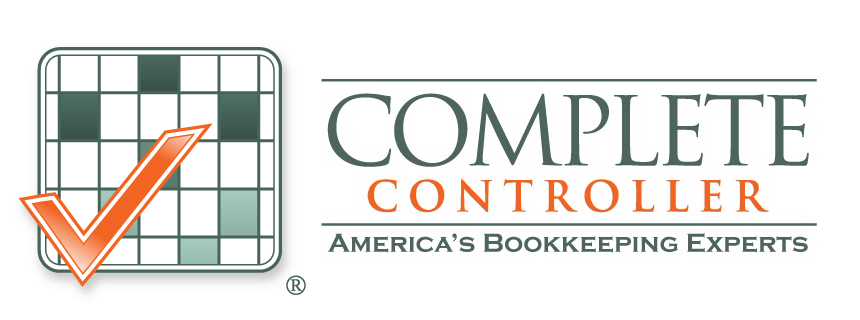Essential Insights for Your Business Structure Guide
A business structure guide provides entrepreneurs with the critical framework needed to select the optimal legal entity for their company, directly impacting personal liability exposure, tax obligations, and growth potential. The choice between sole proprietorship, partnership, LLC, or corporation shapes everything from how much you pay in taxes to whether your personal assets stay protected during lawsuits.
Over my 20 years as CEO of Complete Controller, I’ve witnessed firsthand how the right business structure can make or break a company’s future. One client avoided personal bankruptcy by switching from sole proprietorship to LLC just months before a major lawsuit hit—that single decision saved their family home. This guide walks you through the exact process I use with clients to match their business goals with the perfect legal structure, covering tax strategies that save thousands annually and growth frameworks that attract investors.

What is a business structure guide and why does it matter?
- A business structure guide helps you choose the legal framework defining ownership, liability protection, tax treatment, and operational flexibility for your company
- Legal structures create barriers between personal assets and business debts—sole proprietorships offer zero protection while LLCs and corporations shield your home and savings
- Tax implications vary dramatically: pass-through entities avoid double taxation while C-corps face both corporate and dividend taxes
- Growth potential depends on structure: corporations attract venture capital through stock options while LLCs limit investor appeal
- • State regulations add complexity: California charges $800 annual LLC fees while Texas requires biennial reports
Core Business Structures Demystified
Each business structure serves different entrepreneurial needs, balancing simplicity against protection and tax efficiency against growth flexibility. The four primary structures dominate the American business landscape, with 21.6 million active LLCs representing the fastest-growing category.
Sole proprietorship: Simplicity and risk
Sole proprietorships offer the easiest entry point for new entrepreneurs—no formal paperwork, no separate tax returns, just you and your business idea. You report income on Schedule C of your personal tax return, maintaining complete control over every decision. The dark side emerges when liability strikes: your personal assets become fair game for business debts and lawsuits.
Partnerships: Sharing the load
Partnerships split ownership between two or more people, allowing flexible profit-sharing arrangements through operating agreements. General partnerships expose all partners to unlimited liability, while limited partnerships (LP) and limited liability partnerships (LLP) provide varying protection levels. Law firms and medical practices often choose LLPs to shield partners from each other’s malpractice claims.
LLC: Flexibility and protection
The Limited Liability Company revolutionized small business when Wyoming introduced it in 1977 for Hamilton Brothers Oil Company. LLCs combine corporate liability protection with partnership tax flexibility—your personal assets stay safe while profits flow directly to your tax return. This hybrid structure explains why LLCs grew from zero to 21.6 million entities in under 50 years.
Corporations: Growth and complexity
Corporations create the strongest legal separation between business and owner, ideal for companies planning major expansion. S-corporations limit shareholders to 100 and require all to be U.S. citizens, but avoid double taxation through pass-through treatment. C-corporations face corporate tax rates (currently 21%) plus shareholder dividend taxes, yet remain the gold standard for venture capital investment due to unlimited stock classes and global investor access.
Tax Implications: Your Make-or-Break Factor
Tax treatment often determines which structure saves or costs you thousands annually. Pass-through entities (sole proprietorships, partnerships, LLCs, S-corps) report business income on personal returns, paying individual tax rates ranging from 10% to 37% in 2025.
Self-employment taxes hit sole proprietors and single-member LLC owners hardest—15.3% on all net income. S-corporation election changes this equation dramatically: you pay employment taxes only on reasonable salary, not distributions. A consulting firm owner reduced taxes from $24,000 to $9,000 by electing S-corp status, splitting $200,000 income into $70,000 salary and $130,000 distributions.
C-corporations face double taxation—first at the corporate level (21% federal rate), then shareholders pay taxes on dividends (0%, 15%, or 20% depending on income). This structure makes sense primarily for businesses reinvesting all profits or planning public offerings.

Liability Protection: Safeguarding Your Assets
Business structure determines whether a lawsuit can touch your personal wealth. A café owner operating as sole proprietorship lost their home and savings when a customer sued after slipping on a wet floor—the business had no legal separation from personal assets.
LLCs and corporations create legal firewalls between business obligations and personal wealth. This protection requires proper maintenance: separate bank accounts, formal record-keeping, and avoiding personal guarantees on business loans. Even with an LLC, signing a personal guarantee on a lease makes you personally liable for that specific debt.
Industry risk levels guide protection needs. Professional services face malpractice claims, restaurants encounter slip-and-fall lawsuits, and manufacturers risk product liability. Statistics show 21.5% of businesses fail within their first year—proper structure prevents business failure from destroying personal finances.
Growth Trajectory: Aligning Structure with Ambition
Your business structure either accelerates or limits expansion opportunities. Venture capitalists typically take 20-40% ownership during Series A funding, preferring C-corporations for their stock flexibility and established investor frameworks.
Attracting investors: Why structure matters
C-corporations dominate the startup ecosystem because they offer multiple stock classes, employee stock options, and unlimited shareholders. LLCs struggle with venture funding due to pass-through taxation complications for institutional investors and restrictions on foreign ownership.
S-corporations fall between extremes—attractive for profitable small businesses avoiding double taxation but limited by the 100-shareholder cap and single stock class restriction.
Scaling and changing structures: A roadmap
Business evolution often demands structure changes. A sole proprietor hiring employees should consider LLC conversion for liability protection. An LLC hitting $250,000 in revenue might elect S-corp status for tax savings. A startup securing venture capital typically converts from LLC to C-corp.
Structure changes involve state filing fees, potential tax consequences, and operational adjustments. Planning ahead minimizes disruption—many entrepreneurs start with simple structures knowing they’ll evolve with growth.
Your Step-by-Step Selection Process
Choosing your business structure requires systematic evaluation of current needs and future goals. This framework guides optimal selection while avoiding common pitfalls.
Assessing your business risk and goals
Start by mapping your risk profile:
- Industry liability exposure (high for construction, low for consulting)
- Personal asset protection needs (homeowners need more than renters)
- Growth ambitions (lifestyle business vs. venture-backed startup)
- Tax situation (high earners benefit more from S-corp elections)
Calculate projected revenue, planned hiring timeline, and funding requirements. A freelance writer might thrive as sole proprietor while a tech startup needs immediate C-corp structure for employee equity plans.
Consulting the experts: When to seek help
Complex situations demand professional guidance. Multi-state operations, foreign investors, or industry-specific regulations warrant attorney consultation. CPAs model tax implications across structures—sometimes paying $2,000 for proper setup saves $20,000 in first-year taxes.
State-specific rules add complexity. Delaware attracts corporations with business-friendly laws while Nevada offers strong LLC privacy protections. Your home state’s fees, taxes, and regulations often override these benefits for small operations.
Conclusion
Selecting your business structure ranks among your most consequential entrepreneurial decisions—one I’ve guided thousands through during two decades building Complete Controller. The right structure protects your family’s future, optimizes tax obligations, and positions your company for sustainable growth.
Your business deserves a foundation as solid as your vision. Whether you’re launching tomorrow or restructuring for growth, making informed structure decisions today prevents costly corrections later. For personalized guidance on structuring your business for maximum protection and growth potential, connect with our expert team at Complete Controller.

Frequently Asked Questions About Business Structure Guide
What is the simplest business structure to set up?
Sole proprietorship requires no formal filing or fees—you start doing business under your own name immediately. However, this simplicity comes with unlimited personal liability for all business debts and lawsuits.
Which business structure provides the best personal asset protection?
LLCs and corporations legally separate business liabilities from personal assets, preventing lawsuits or debts from touching your home, car, or savings. Maintaining this protection requires following corporate formalities and keeping finances separate.
How do taxes differ between LLCs and S-Corps?
Both use pass-through taxation, but S-corps split income between salary (subject to employment taxes) and distributions (not subject to employment taxes). LLCs pay self-employment tax on all profits unless they elect S-corp tax treatment.
Can I change my business structure after starting?
Yes, businesses commonly evolve structures as they grow. Moving from sole proprietorship to LLC involves state registration and new tax ID numbers. Converting LLC to corporation requires additional steps but remains feasible with proper planning.
What structure works best for businesses seeking venture capital?
C-corporations dominate venture capital due to preferred stock options, unlimited shareholders, and familiar legal frameworks. VCs rarely invest in LLCs due to pass-through tax complications for institutional investors.
Sources
- Checketts Law. “The History of LLCs as a Business Entity.” 2025. https://checkettslaw.com/the-history-of-llcs-as-a-business-entity/
- DHJJ. “Choosing the Right Business Structure: Tax Implications.” 2024. https://www.dhjj.com/tax-implications-business-structures/
- Eqvista. “Business Structure Guide.” 2025. https://eqvista.com/business-structure-guide/
- HubSpot. “Business Structures: How to Choose.” 2025. https://www.hubspot.com/business-structures
- Indeed. “5 Common Business Structures.” 2025. https://www.indeed.com/career-advice/business-structures
- Internal Revenue Service. “Small Businesses and Self-Employed.” 2025. https://www.irs.gov/businesses/small-businesses-self-employed
- Legal Dictionary. “Sole Proprietorship – Definition, Examples.” 2016. https://legaldictionary.net/sole-proprietorship/
- LendingTree. “Percentage of Businesses That Fail.” 2025. https://www.lendingtree.com/business/small/failure-rate/
- NerdWallet. “Business Structure: How to Choose.” 2022. https://www.nerdwallet.com/article/small-business/business-structure
- RSM. “Business Structure and Entity Choice.” 2025. https://rsmus.com/business-structure-guide
- Small Business Administration. “Choose Your Business Structure.” 2025. https://www.sba.gov/business-guide/launch-your-business/choose-business-structure
- Texas Secretary of State. “Selecting a Business Structure.” 2023. https://www.sos.texas.gov/corp/businessstructure.shtml
- TurboTax. “How an S-Corp Reduces Self-Employment Taxes.” 2025. https://turbotax.intuit.com/tax-tips/small-business-taxes/how-an-s-corp-can-reduce-your-self-employment-taxes/
- UpCounsel. “Venture Capitalist Percentage Ownership in Startups.” 2025. https://www.upcounsel.com/seed-funding-percentage-ownership
- Westfield Insurance. “Pros and Cons of Different Business Structures.” 2019. https://www.westfieldinsurance.com/resources/business-structures
- Wikipedia. “Corporation.” 2025. https://en.wikipedia.org/wiki/Corporation
 About Complete Controller® – America’s Bookkeeping Experts Complete Controller is the Nation’s Leader in virtual bookkeeping, providing service to businesses and households alike. Utilizing Complete Controller’s technology, clients gain access to a cloud platform where their QuickBooks™️ file, critical financial documents, and back-office tools are hosted in an efficient SSO environment. Complete Controller’s team of certified US-based accounting professionals provide bookkeeping, record storage, performance reporting, and controller services including training, cash-flow management, budgeting and forecasting, process and controls advisement, and bill-pay. With flat-rate service plans, Complete Controller is the most cost-effective expert accounting solution for business, family-office, trusts, and households of any size or complexity.
About Complete Controller® – America’s Bookkeeping Experts Complete Controller is the Nation’s Leader in virtual bookkeeping, providing service to businesses and households alike. Utilizing Complete Controller’s technology, clients gain access to a cloud platform where their QuickBooks™️ file, critical financial documents, and back-office tools are hosted in an efficient SSO environment. Complete Controller’s team of certified US-based accounting professionals provide bookkeeping, record storage, performance reporting, and controller services including training, cash-flow management, budgeting and forecasting, process and controls advisement, and bill-pay. With flat-rate service plans, Complete Controller is the most cost-effective expert accounting solution for business, family-office, trusts, and households of any size or complexity.
 Reviewed By:
Reviewed By:




